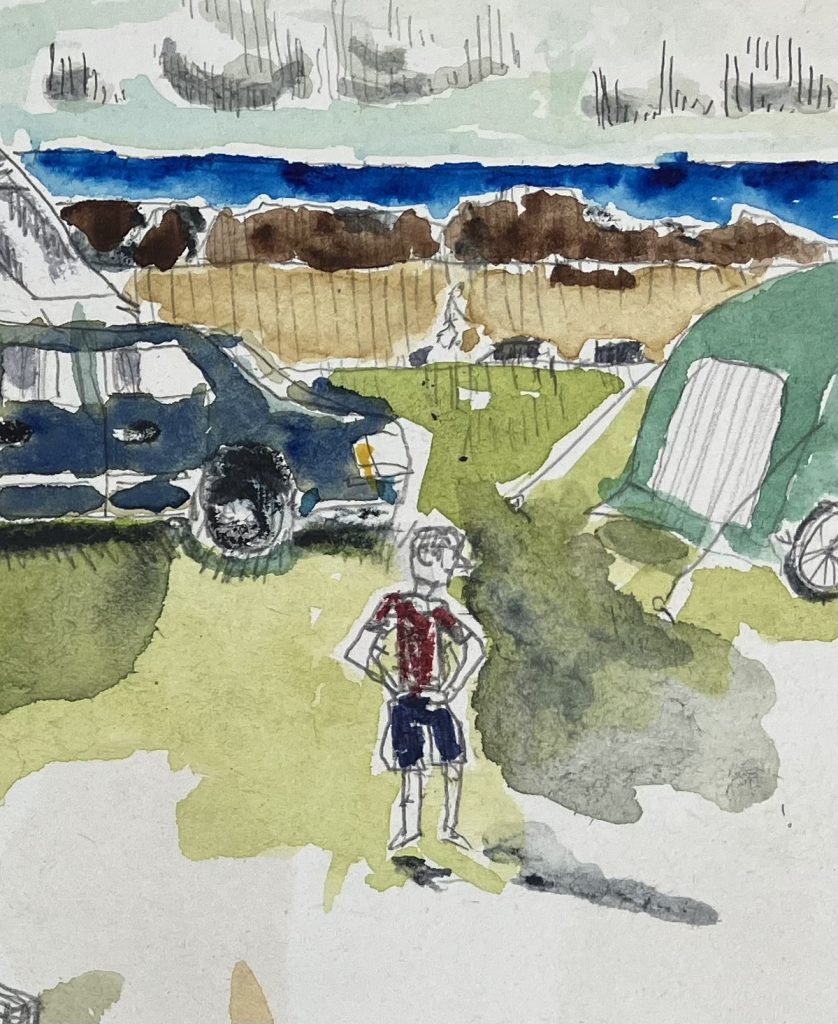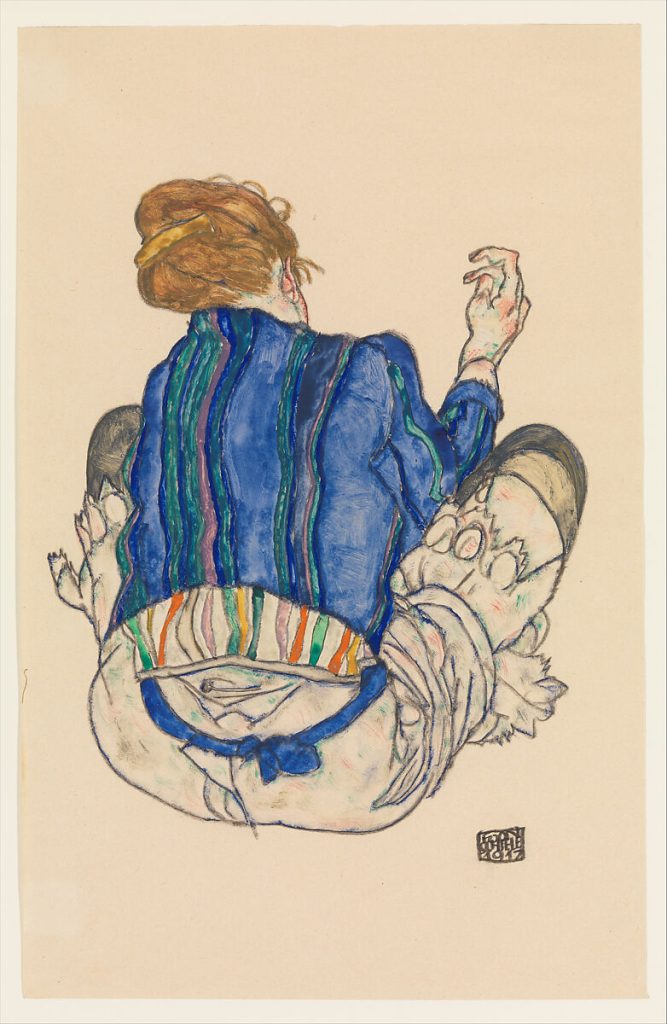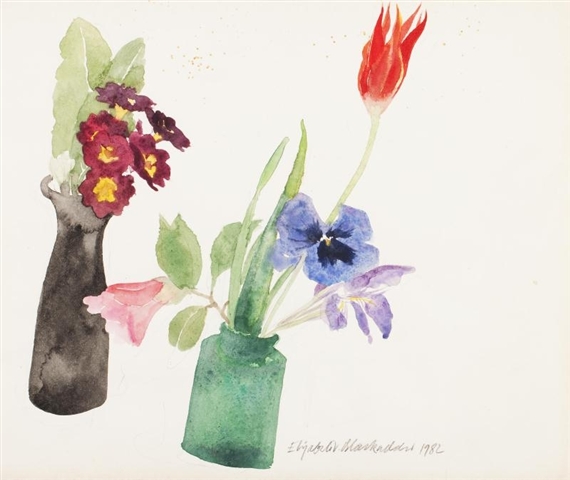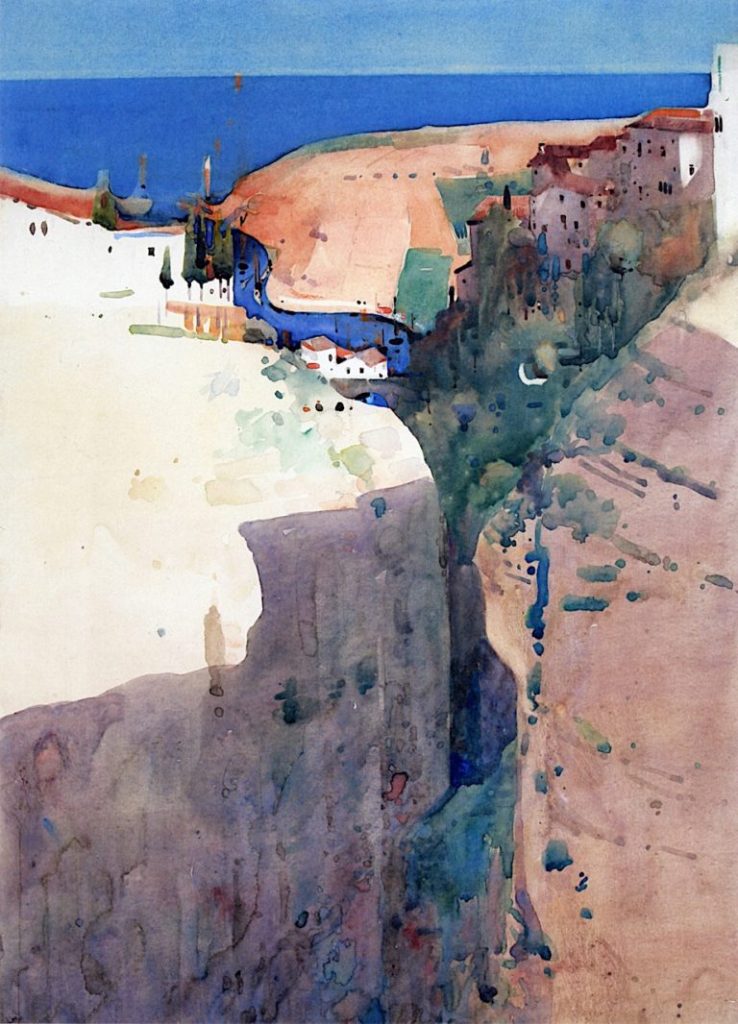Watercolour is a medium I have — like many an amateur — tried in the past with mixed results. I particularly like wet on wet, or my version of it, at least, in which a small dab of pure colour from the tip of a brush spreads across the small pool of wash already applied.

Many artists provide inspiration.
Egon Schiele, 1890-1918, primarily worked in oil paints but produced exquisite watercolours and gouache works of life models and himself, taking advantage of the transparent nature of the medium in folds of clothing and luminescent skin, while still revealing the mark making of his exceptional talent as draughtsman. (Seated Woman Back View)

Elizabeth Blackadder, who died only recently, worked on many still life and botanical drawings and paintings. Again, her flowers glow, with colours applied in vary depths, sometimes pale, sometimes deep. Even in the occasional oil painting, such as White Still Life, she appears reluctant to capitalise on the opaque qualities of oil paint. (Still Life with Flowers, 1982)

Arthur Melville, one the historic Glasgow Boys of the late 19th and early 20th century, was unparalleled in his skills with watercolours. Plus he made the correct decision to travel to a hot, arid part of the world to deploy them in townscapes and other settings of North Africa and the Middle East. Not only could he paint loose evocative scenes brimming with light but also detailed depictions of what he experienced. (Gorge de Passages)

